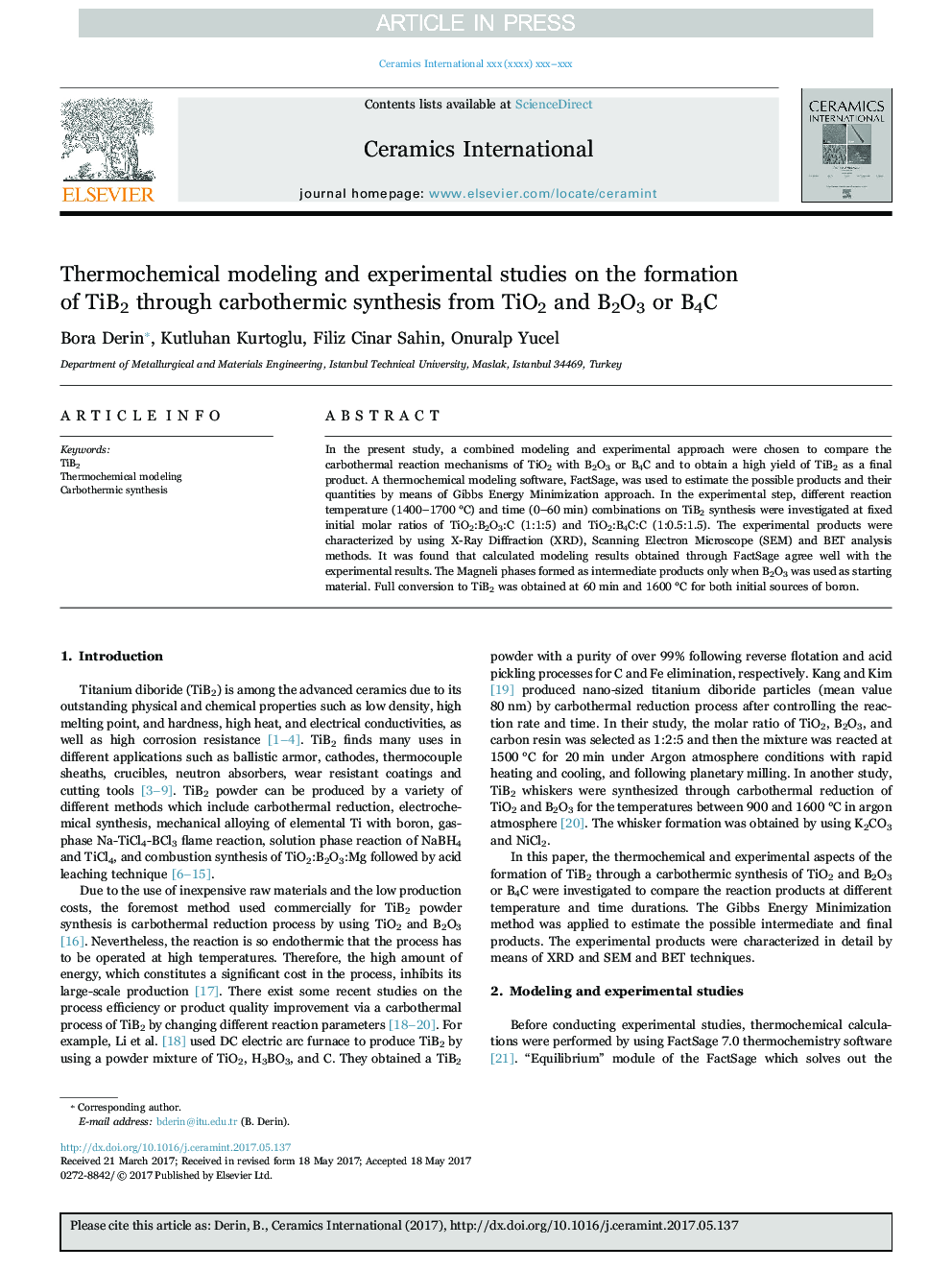| Article ID | Journal | Published Year | Pages | File Type |
|---|---|---|---|---|
| 5438044 | Ceramics International | 2017 | 8 Pages |
Abstract
In the present study, a combined modeling and experimental approach were chosen to compare the carbothermal reaction mechanisms of TiO2 with B2O3 or B4C and to obtain a high yield of TiB2 as a final product. A thermochemical modeling software, FactSage, was used to estimate the possible products and their quantities by means of Gibbs Energy Minimization approach. In the experimental step, different reaction temperature (1400-1700 °C) and time (0-60 min) combinations on TiB2 synthesis were investigated at fixed initial molar ratios of TiO2:B2O3:C (1:1:5) and TiO2:B4C:C (1:0.5:1.5). The experimental products were characterized by using X-Ray Diffraction (XRD), Scanning Electron Microscope (SEM) and BET analysis methods. It was found that calculated modeling results obtained through FactSage agree well with the experimental results. The Magneli phases formed as intermediate products only when B2O3 was used as starting material. Full conversion to TiB2 was obtained at 60 min and 1600 °C for both initial sources of boron.
Keywords
Related Topics
Physical Sciences and Engineering
Materials Science
Ceramics and Composites
Authors
Bora Derin, Kutluhan Kurtoglu, Filiz Cinar Sahin, Onuralp Yucel,
